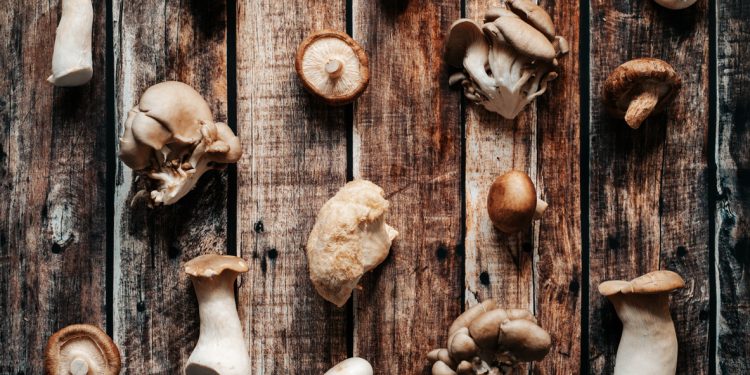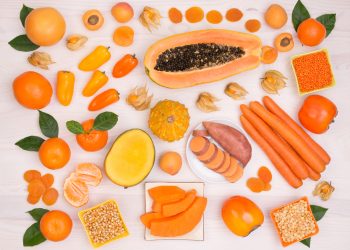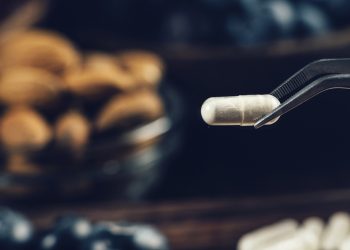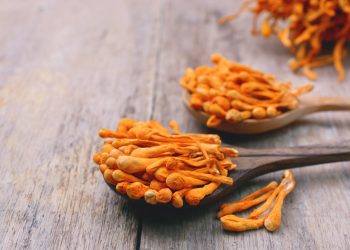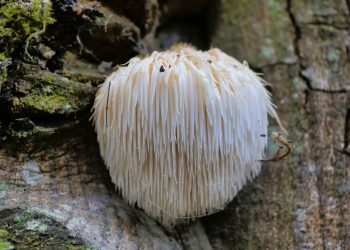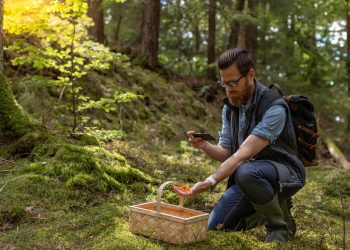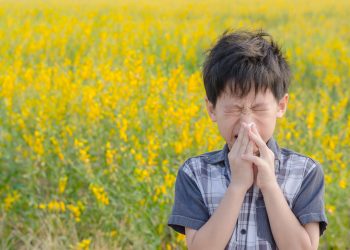Medical mushrooms aren’t anything new — many of history’s greatest cultures prized them for their ability to inspire, energise, and improve immunity.
But it’s only within the last ten years we’ve woken up to the fact that these benefits are timeless. Medicinal mushrooms still have the power to change lives.
Keep reading to learn how they might change yours. In this guide you’ll find everything you need to know about getting started with medicinal mushrooms!
- How to take mushrooms: quick start guide
- What are medicinal mushrooms?
- The history of medicinal mushroom use
- Medicinal mushroom types
- Reishi
- Lion’s mane
- Cordyceps
- Chaga
- Mushrooms for wellness, immunity, and more!
- How are mushroom supplements made?
- How to take mushrooms: the details
- How to take medicinal mushrooms
- The best time to take mushrooms
- Finding your optimal dose
- Why you should take occasional breaks
- Medicinal mushroom Q&A
How to take mushrooms: quickstart guide
Ready to get started with medicinal mushrooms as soon as possible? The list below should help.
- Take Reishi to relax and energise
- Take Cordyceps to enhance strength and energy
- Take Lion’s Mane to boost mood and immune health
- Take Chaga for improved immunity and glowing skin
- Take Maitake for broad-spectrum antioxidant protection
When it comes to dosing, less is more. Get started at the lower end of your product’s dosing spectrum and take a few days to evaluate its effects before upping things. You can also take a day or two ‘off’ from medicinal mushrooms every couple of weeks. (More on why that’s important — and a whole lot more — a little later.)
Now that we’ve covered the most basic basics, let’s dive into this guide’s details!
What are medicinal mushrooms?
On the most basic level medicinal mushrooms are exactly what their name implies:
Mushrooms whose nutrient profile gives them medicinal properties, including anti-stress, anti-catabolic, anti-inflammatory, and antioxidant benefits.
This very first property — stress reduction — might very well be the most important one of all.
Why? Because, whether we realise it or not, our bodies face enormous amounts of stress virtually every day. Your stressors might be unique to you (like your job, your parenting schedule, etc) or universal (like environmental pollution).
Regardless, the ability to cope with, adapt to, and overcome stress is one of the most important aspects of health. That’s where medicinal mushrooms come in — many of them have ‘adaptogenic’ properties that upregulate your body’s stress tolerance from the inside out.
Many medicinal mushrooms are powerful adaptogens, notably cordyceps and reishi. It’s very possible that all the other mushroom benefits we know and love (more on these benefits a little later) flow from this one.
The history of medicinal mushroom use
Medicinal mushrooms and humanity go way back. Archaeological evidence points to the idea that humans have been using mushrooms for 5,000+ years! [1]
Some of the earliest known books mention mushrooms, too, where it’s known as “the herb of the immortals.” Early physician Li Shi Zhen described reishi’s benefits this way: [2]
“It benefits the life energy, or “qi” of the heart, repairing the chest area and benefiting those with a knotted and tight chest. Taken over a long period of time, agility of the body will not cease, and the years are lengthened to those of the Immortals.”
Medicinal mushroom types
As great as mushrooms are, not all of them are medicinal. Only a small percentage of the incredible 1.5 million fungi species on this earth are considered to have medicinal properties. For a mushroom to earn the “medicinal” distinction is no small feat!
Which mushrooms make the cut, you may ask? Let’s take a look at a few of them.
Reishi
Reishi is probably the best-known medicinal mushroom of all. This species is native to Southeastern Asia, where it’s been known and loved for thousands of years. The ancients believed that reishi strengthened the heart and nourished the spirit, improving one’s health from the inside out. [3]
Lion’s mane
If you’ve been reading up on our blog you probably already know that organ meats can help improve your workouts, immunity, and much more . . . but did you know that Lion’s Mane mushrooms possess many of the same benefits? Studies show this visually distinctive mushroom may have this anti-fatigue, anti-depressant, and anti-aging properties.
Cordyceps
Cordyceps Sinensis is another majorly popular medicinal mushroom. Like many other shrooms in this category, it grows in Asia . . . unlike many other mushrooms in this category, it primarily grows in Tibet. Yet an increasing number of European growers are also in the process of mastering cordyceps cultivation. At Hirsch, all of our cordyceps extracts are grown with love in the EU. [4]
Chaga
Chaga grows on birch bark throughout many colder climates. It’s known to boost immunity, reduce oxidative stress, and quell inflammation. What gives this medicinal mushroom its power? A uniquely powerful combination of antioxidants. [5]
Mushrooms for wellness, immunity, and more!
The benefits of medicinal mushrooms are timeless enough to still hold true today. Mushrooms have the potential to help your kids get over their coughs and colds, improve your athleticism, and shift your skincare. Let’s take a look at these benefits one by one.
Children’s coughs/colds
Any parents reading this will understand just how painful it can be to see your children suffering with coughs, colds, and the like.
Could mushrooms help? Maybe. One study from 2017 found that the beta-glucans present in many medicinal mushroom species may prevent upper respiratory issues in children. [6] Beta-glucans may improve the “foundation” of immunity, too, helping your children stay healthier year-round.
Different mushrooms have different immune-related benefits, allowing targeted supplementation depending on what your child needs:
- Cordyceps may benefit overall immunity and strengthen the ‘breathe’ (the lungs)
- Reishi may regulate immunity, balancing both under- and overactive immune systems
- Echinacea may also regulate immunity, all while improving your mood
Athleticism
“Of all the organisms in the natural environment, mushrooms stood out as having the greatest potential for use by elite warriors. Those who were familiar with their properties included them as powerful tools to their survival arsenal…”
– Mycologist Paul Stamets [7]
Not many of us are actual warriors these days, but that doesn’t mean we don’t have battles to face in life. Medicinal mushrooms could help you battle stress and reach your ideal athleticism just like they once did for warriors of old.
Reishi and cordyceps sinensis are among the best performance-enhancers — so much so that some Olympic teams have credited their success to medicinal mushrooms. Athletes may prefer taking their mushrooms in the form of tea, as this allows for much larger doses.
Unlike many other natural ergogenic aids, medicinal mushrooms can benefit both strength and endurance athletes. They seem to promote energy production so broadly that any type of athlete can benefit. [8]
Shroom-powered . . . skincare?
This benefit might seem a little surprising, at least at first glance.
But it’s actually not surprising at all — not when you realise the most medicinal mushrooms are loaded with antioxidants. Mushrooms are rich in polysaccharides and other powerful antioxidants that protect your skin’s cellular status from wear and tear.
“Reishi mushrooms sustain levels of two of the most powerful antioxidants in the skin, namely ergothioneine and reduced glutathione,” dermatologist Jeannette Graf explains. “These prevent premature aging and free radical formation, and also enhance sun protection.” [9]
Reishi and other mushrooms might not make you outright immortal, but they could point you in that direction. You can take a dual approach to mushroom-infused skincare by supplementing with them and selecting a high-quality infused skincare product.
How are mushroom supplements made?
How are medicinal mushroom supplements made? That depends on the type of mushroom supplement you’re talking about. There are two major types of these supplements: whole fruiting body, and myceliated grain.
Whole fruiting body
Whole fruiting body refers to what you probably think of when you hear the term “mushroom” — mushrooms that are ‘fruiting’ out of logs, trees, or stumps. A mushroom’s fruiting body contains its highest concentration of active compounds.
Many of Asia’s medicinal mushroom supplements are made from whole fruiting bodies. (Fun fact: China produces 80+% of the world’s medicinal mushrooms to this day.)
Myceliated grain
At the very same time a mushroom is visibly fruiting, something mysterious is going on behind the scenes: mycelial growth. Mycelium is a white, strand-like substance akin to a mushroom’s roots, and it scours the soil for nutrients while simultaneously connecting mushrooms with other plants, eachother, and trees.
While mushroom supplements made with myceliated grain are fast and affordable to make, they may not be as nutrient-dense as supplements made from a mushroom’s fruiting body. They still contain beta-glucans and other unique compounds, however.
How to take mushrooms: the details
Ready for a longer version of the quick start guide found at the start of this article? If so, this section is for you. In it we’ll be diving into the details.
How to take medicinal mushrooms
Medicinal mushrooms can be taken in several different ways, including:
- Extract powders
- Capsules
- Tinctures
- Powder (heteropolysaccharides)
Mushroom extract powders are one of the purest, most potent, most effective ways to experience what medicinal mushrooms are all about. These powders have a mild earthy flavour, though they’re palatable enough to add to smoothies, coffee, or other favorite drinks.
Mushroom capsules are another great option — they’re just as practical as powders! They can’t be mixed into foods/beverages, however, unless you manually open them up. The highest-quality capsules will be free from fillers, ‘flow aids,’ and other additives.
And then we have tinctures. A traditional tincture captures the bioactive ‘essence’ of medicinal mushrooms and places it into an ultra-concentrated, super-precise format.
Last but not least is the powderised option. Also known as heteropolysaccharides, mushroom powders are processed by drying and then powderising fresh mushrooms. The end result is a potent powder that’s both convenient and effective — mushroom powder can be stirred into your favourite beverages, smoothies, and more.
The best time to take medicinal mushrooms
It may not actually matter what time of the day you take medicinal mushrooms (just as long as you take them consistently enough to get consistent benefits).
That being said, some mushrooms have energising (or sedating) effects that make them better suited to different dosing windows:
- Reishi is calming enough that many people enjoy taking it before bed
- Cordyceps is energising enough that it may keep some people up at night
- Lion’s Mane boosts productivity so much that you’ll probably want to take it during the day!
Finding your optimal dose
Doses of 1-3 grams per day are ideal for most people taking most types of medicinal mushrooms. This comes out to roughly: [10]
- Half a teaspoon of mushroom powder
- 2 milliliters of mushroom extract
- A serving of mushroom capsules
While slightly larger doses can be helpful for athletes and other groups exposed to excess stress, dosages in the 1-2 gram range provide maximal effects without a hefty price tag.
Determining the exact dose that’s right for you can take a little longer. Simply get started at the lower end of your product’s dosing range, then take a few days to evaluate your results. Up your dose by 10-20% if you’re not feeling quite as good as you’d like to yet.
Why you should take occasional breaks
The best workflows, sleep schedules, and training programs undulate throughout the day. Why? Because the human body is cyclical.
The best approach to taking medicinal mushrooms adheres to a similar precept of progressive adaptation. Instead of taking the same exact dosage day-in and day-out, consider varying your dosage routine. You can take:
- 2 days on (with mushrooms), 1 day off (without mushrooms)
- 4 days on, 3 days off
- 3 weeks on, 1 week off
In short, medicinal mushrooms are immune system stimulating. Taking them without breaks can be overstimulating and counterproductive, especially if your body builds up a tolerance. Breaks are important!
Medicinal mushroom Q&A
Where do medicinal mushrooms come from?
Most medicinal mushrooms originated from Asia, though high-quality mushrooms are now grown throughout Europe, too.
Are medicinal mushroom adaptogens?
Yes, many medicinal mushrooms are considered adaptogens. That means they help your body adapt to and overcome multiple types of stress.
Do medicinal mushrooms contain beta-glucans?
Yes, most medicinal mushrooms are rich in beta-glucans and other potent antioxidants.
Do medicinal mushrooms cause side effects?
Not usually, especially if you’re taking typical doses.
Will medicinal mushrooms improve my life?
They sure could! Most people who try medicinal mushrooms are surprised by the depth and breadth of their benefits — and the speed with which they can turn things around.
Do medicinal mushrooms improve immunity?
Yes, studies show that medicinal mushrooms may improve both innate and adaptive immunity.

